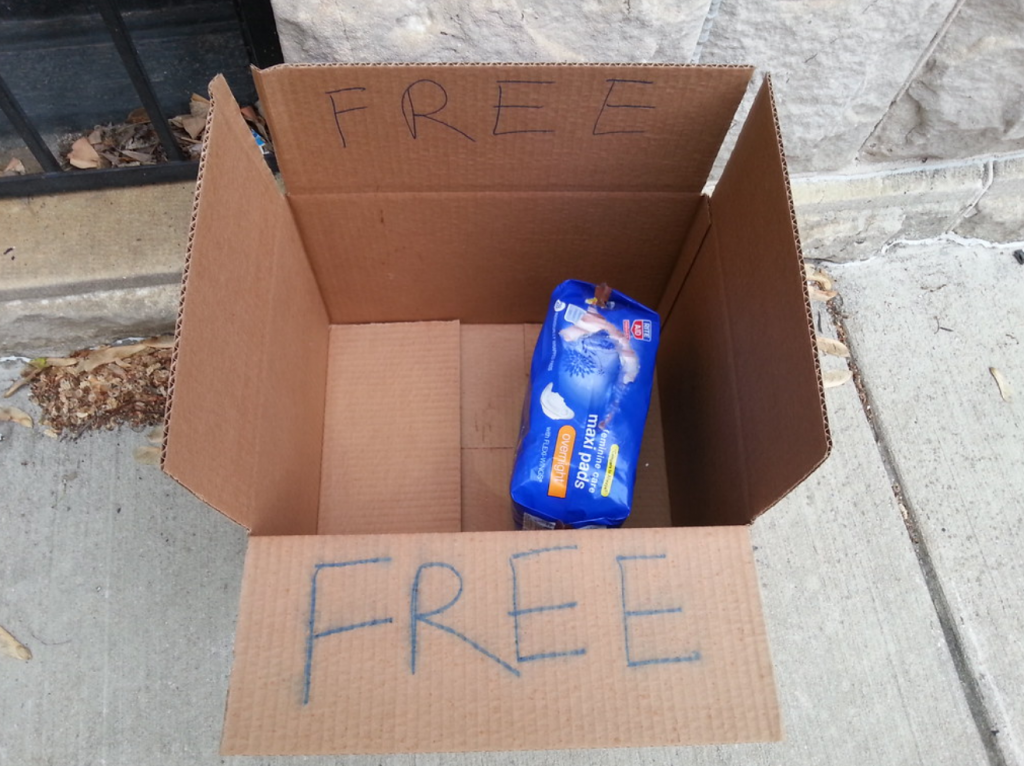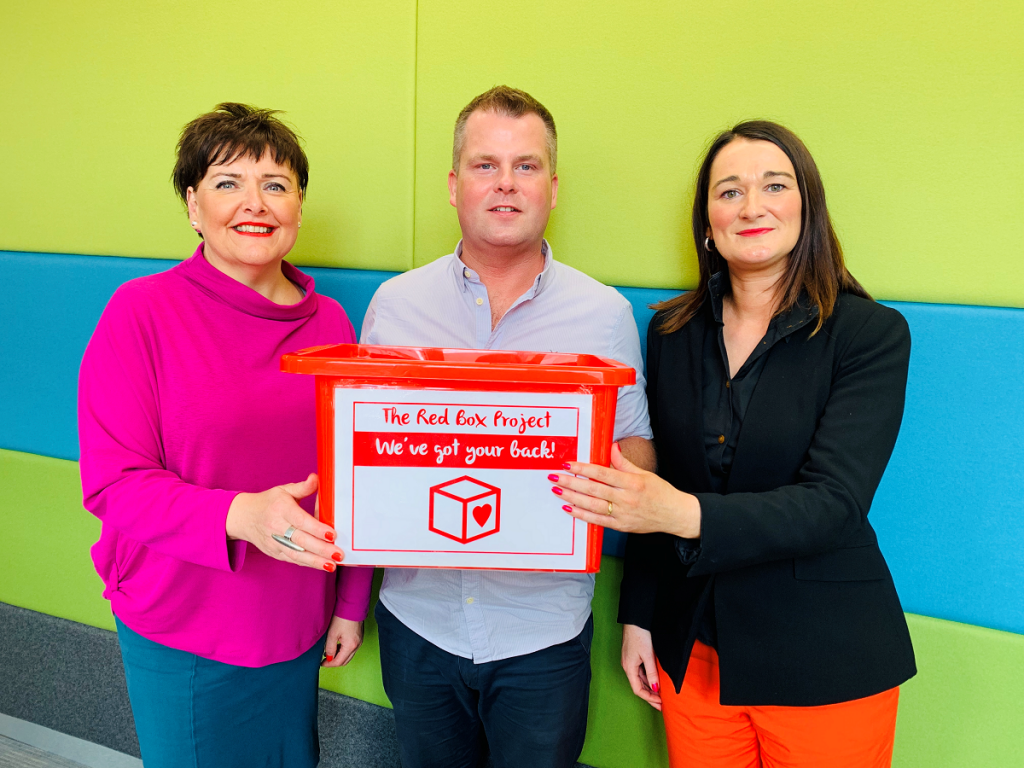
Period poverty is a topical issue, globally and within the United Kingdom (UK). Recently, there has been some concern about the relationship between period poverty and school attendance. In addition, the reduction of taxation on sanitary products has been the subject of a long-running campaign.
This blog article considers the following issues: What is period poverty? What is the tampon tax? What initiatives are in place to tackle period poverty across the world, the rest of the UK, and in Northern Ireland (NI)?
What is period poverty?
A common definition is:
Poor menstrual knowledge and access to sanitary products…
In the UK, the focus is on the relationship between period poverty and school attendance. Back in 2015, the UK Parliament debated VAT on Women’s Sanitary products and internationally, some countries like India, Kenya and Canada, have removed such taxes.
Causes
Plan International UK (a children’s charity working to advance children’s rights and equality for girls all over the world) recently published research based on focus groups in England and NI. Their publication Break the Barriers: Girls’ Experiences of menstruation in the UK identifies a ‘toxic trio’ comprising:
- The cost of sanitary products;
- A lack of education about periods; and,
- Shame, stigma and taboo.
Cost
Price obviously impacts on consumers’ ability to buy sanitary products. In addition to the prices set by suppliers, many, but not all goods, are subject to taxation. In the UK, it is Value Added Tax (VAT: the standard rate is 20%, with a reduced rate of 5% on sanitary products) whereas other countries may have sales taxes applicable to sanitary products.
Taxes push up the price of goods. However, where the burden (i.e who bears the cost) of an indirect tax falls depends on how ‘elastic’ demand is due to price changes. Demand for luxury (i.e. non-essential) goods will usually decrease when prices increase because people can go without them, or switch to alternatives. But demand for essential goods tends to be inelastic – in other words demand will not fall much in response to price increases. Because consumers cannot do without them, they have to find the money somehow. Essentially, it is the behaviour of buyers and sellers in markets that determines where the economic burden of a tax falls, not tax law.
Tax cuts
Sanitary products are essential goods. This means girls and women must buy them, even as prices rise. But if taxes were cut, would it mean cheaper products? Who would benefit?
Tax cuts should generally benefit consumers. However, there is some evidence from America that although the 2005 removal of the ‘tampon tax’ in New Jersey did benefit consumers, the benefit was unequal across income groups – it was more beneficial for lower earners. This suggests that tax reductions could make menstrual hygiene products more accessible for low-income consumers.
On the contrary, Australia removed its 10% federal General Sales Tax on tampons in January 2019, and the price of tampons has fallen but not as significantly as some expected. This led to accusations that firms were ‘boosting their profits’. In a March 2019 report, the Australian Competition and Consumer Commission found that after the tax change:
Only a few businesses used the opportunity to increase their margins and usually only for a small number of products.
International taxes on sanitary products
On 1 January 2019 in the European Union, Ireland was the only country to apply zero VAT on sanitary products. Cyprus and the UK levy 5% rising to Hungary levying 27%. The chart below, produced by the Civio Foundation, shows the difference between VAT on sanitary products:

Beyond the EU, similar variations apply:

UK VAT
In the UK, there has been a long-running campaign for zero-rating sanitary products, along with food, children’s clothing and books; campaigners aim to make sanitary products cheaper.
A 2019 House of Commons Research Briefing states that ‘the UK’s discretion in determining the structure of VAT, as with all Member States, is limited by European VAT law, and to date the introduction of a new zero rate would contravene the current agreement on VAT rates’.
In 2015, the UK Government announced it would try to change European Union (EU) law so that it could zero-rate sanitary products. An ongoing EU review of VAT law made various proposals in 2018, but to date there is no firm timetable for these proposals to be agreed. (Note, sanitary products were VAT free in Ireland prior to EU accession.)
Of course, future applicability of EU law in the UK is subject to Brexit-related uncertainty and ‘the Government have not published any specific details as to the UK’s post-Brexit relationship with the EU on VAT’.
Arguably, attempts to remove UK VAT from sanitary products are ‘palatable politics‘. Zero-rating might alleviate period poverty, but not eliminate it, because it is about more than financial resources.
The Tampon Tax Fund
Also in 2015, the UK Government established the Tampon Tax Fund, funded by receipts from VAT on sanitary protection. Initially the Fund provided £5m, split between four domestic abuse charities (the Eve Appeal, SafeLives, Women’s Aid, and The Haven). Since then, the Fund has distributed a total of £47m.
| Year | HMT Allocation (£000s) |
| 2016-17 | 118 |
| 2017-18 | 502 |
| 2018-19 | 375 |
| TOTAL | 995 |
Table 1: Tampon Tax Fund allocations to NI
Table 1 shows that £1 million was allocated to NI from 2016-17 to 2018-19.
There has been some controversy surrounding some uses of the Tampon Tax funding. In 2017, a UK Government Minister stated that ‘in total, 25 charities have been allocated funding so far. This includes funding allocated to Comic Relief and Rosa to disburse funding over the coming year to a range of grassroots women’s organisations across the UK’.
In March 2018, the UK Government announced that over the next two years, the Fund would support projects that ‘tackle sexual violence, address social exclusion among Black, Asian, Minority and Ethnic women and improve mental health and wellbeing’.
Extent
In the UK, there is a lack of data on the prevalence of period poverty. One nationally representative study found that:
…one in ten girls and women said they had been unable to afford sanitary wear while one in seven said they had struggled to afford it.
The focus of the survey was on girls’ experience of menstruation in an educational setting. There is concern that girls are missing school – with impacts on attainment and life chances – because they cannot afford sanitary products.
Recent English Department for Education (DfE) analysis of 2015/16 school absence statistics found a consistently higher rate of absence amongst children (both boys and girls) eligible for free school meals.
This applies to absences due to illness, and for unauthorised absences for ‘other reasons’. Free school meal entitlement is frequently used as a proxy for economic disadvantage. The DfE analysis explored if disadvantaged girls are not attending school due to period poverty.
The DfE analysis states that:
Absence rates for both boys and girls rise from the age of 10. Absence rates for girls are lower than for boys until the age of 13 but girls’ absence rates exceed those of boys from the age of 13 onwards.
It also concludes that:
The increased absence rate for girls from the age of 13 is seen among pupils eligible for free school meals and also among those not eligible for free school meals.
It has been noted, however, that the DfE analysis should be treated with caution because it is impossible to verify the validity of the reasons given for absence. Nor do we know specifically what ‘illness’ or ‘other reasons’ encompass.
Policy responses
The Belfast Telegraph reported in April 2019 that ‘Northern Ireland will be the only place in the UK where girls will not have access to free sanitary products in schools from next year’.
In Scotland, from the start of the 2018/19 academic term, all schools, colleges and universities in Scotland have provided access to free sanitary products. The Scottish Government states that it is ‘the first Government in the world to make free sanitary products available to all pupils and students’.
In England, ‘the Government committed to provide access to free sanitary products in England’s secondary schools and colleges in last month’s Spring Statement, and today Children and Families Minister Nadhim Zahawi confirmed access to the free products will also be fully funded by the Department for Education in all primary schools across the country.
In Wales, it was announced in April 2019 that ‘girls in all Welsh schools will get access to free sanitary products, as part of a scheme costing £2.3m’.
There is no Northern Ireland-wide provision, but there are some local initiatives. For example, Derry and Strabane Council is piloting an initiative which will make free sanitary products available in a number of venues. In addition, the Red Box project (a UK-wide campaign) was introduced into NI in January 2019, at Kilcooley Primary.
The Red Box project follows on from another charitable project called The Homeless Period which has donated sanitary products to ‘thousands of women’ in the two years it has been running.
In June, the Red Box project commenced a pilot in NI involving 11 schools (from all sectors, both primary and post-primary) under the guidance of a cross-departmental steering group. To begin with, there is a survey, seeking to determine the level of awareness and extent of period poverty in NI. Initial indications from the team suggest that the cost of providing sanitary products is not that significant.

Any decision to move beyond a pilot to a new policy would need to be made by a Minister rather than civil servants and whether or not an incoming Executive would choose to prioritise such expenditure remains to be seen.

